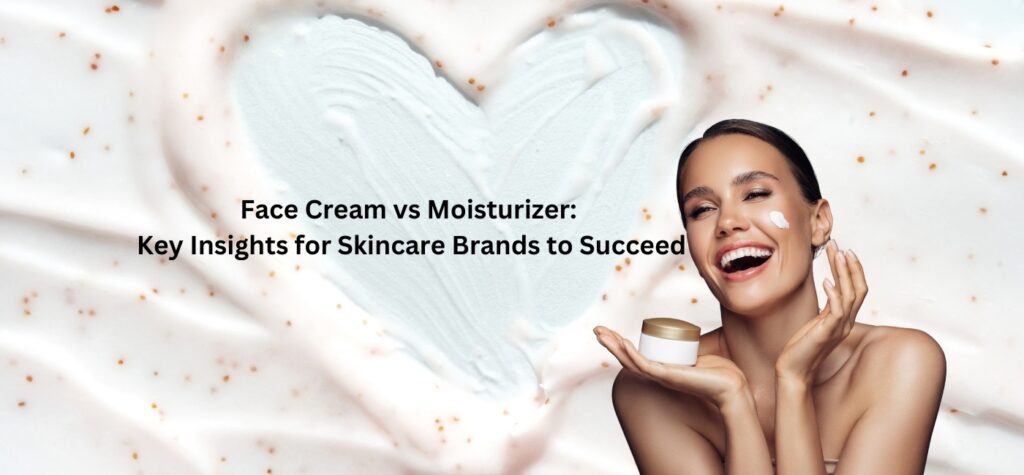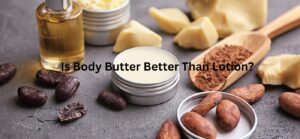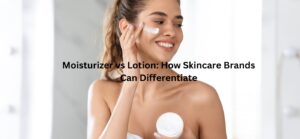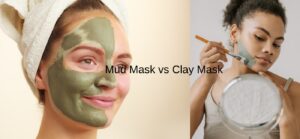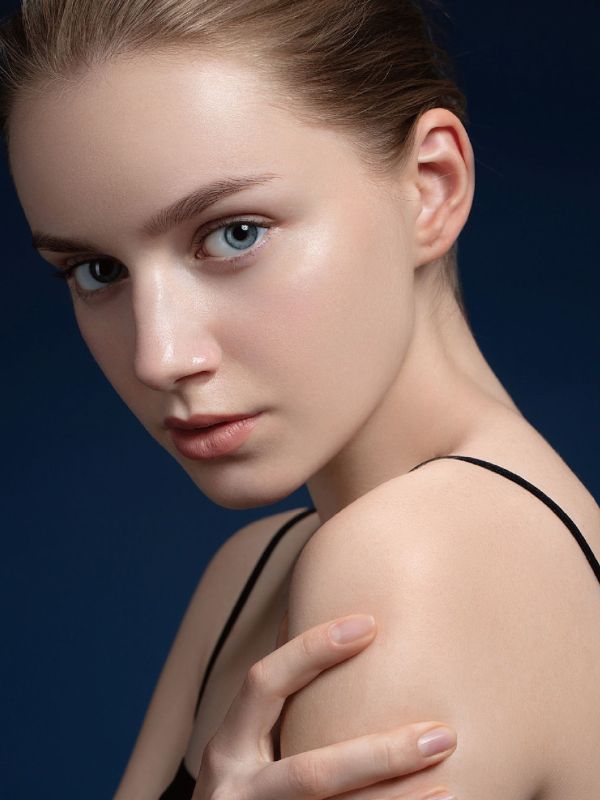In the competitive skincare industry, understanding the distinction between face cream and moisturizer is essential for brands looking to develop effective products. While these terms are often used interchangeably, they serve different functions in skincare. Skincare brands must carefully consider their formulation, positioning, and marketing strategies to meet diverse consumer needs.
Choosing the right product category can impact customer satisfaction, brand reputation, and long-term sales. With consumers becoming increasingly knowledgeable about skincare ingredients and formulations, brands must provide clear value propositions for each product they launch. Partnering with an experienced OEM manufacturer can help create high-performance formulations that cater to specific skin concerns.
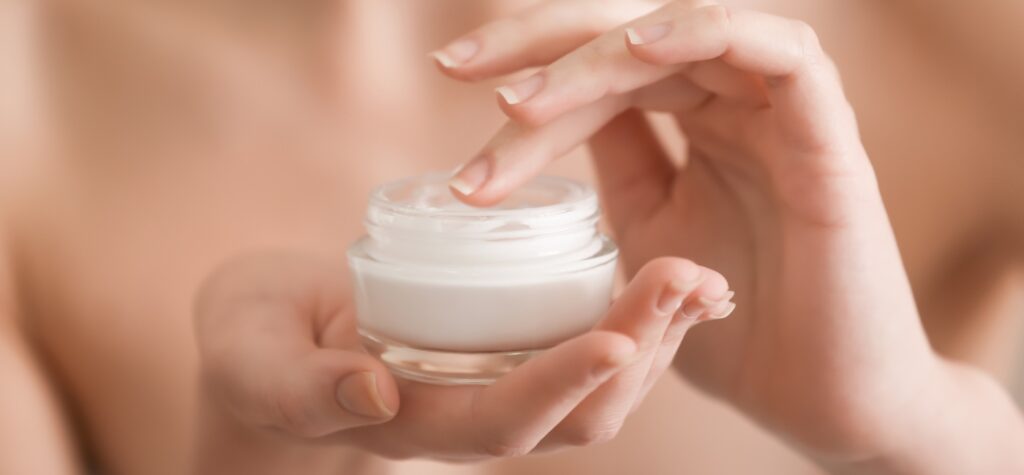
skincare routine application
Face Cream vs Moisturizer: Understanding the Key Differences
Face cream is typically richer and thicker, designed for deep nourishment and long-lasting hydration. It contains a higher concentration of occlusive and emollient ingredients that help seal in moisture, repair the skin barrier, and provide anti-aging benefits. These formulations often include ceramides, peptides, fatty acids, and oils that support skin health, making them ideal for dry, mature, and sensitive skin.
Moisturizer, on the other hand, focuses primarily on hydrating the skin and maintaining moisture balance. It is generally lighter in texture and absorbs quickly, making it suitable for all skin types, including oily and combination skin. Moisturizers come in different forms, such as gels, lotions, emulsions, and lightweight creams. They are designed to replenish hydration levels and improve the skin’s barrier function without feeling heavy or greasy.
Understanding the key differences between these two product categories is crucial for skincare brands when developing and positioning their products in the market. While both aim to hydrate and protect the skin, their formulation and target audience vary significantly.
What Makes a Good Face Cream? Types and Representative Brands
A well-formulated face cream should provide long-lasting moisture while supporting skin repair and rejuvenation. High-quality face creams contain a combination of humectants, emollients, and occlusives to lock in hydration and enhance the skin’s overall health. Depending on the formulation, they may also include active ingredients such as retinol, peptides, and antioxidants to address specific skin concerns.
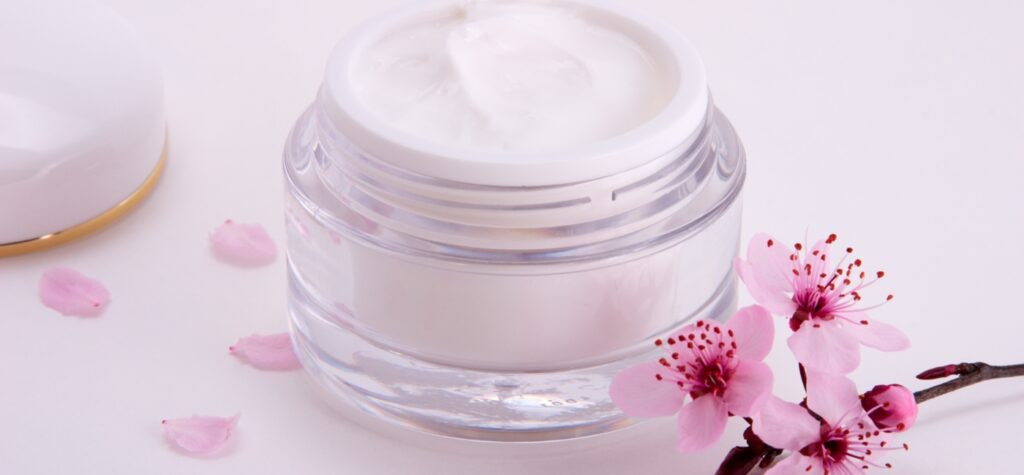
Face creams are generally categorized based on their function. Anti-aging face creams focus on reducing wrinkles, fine lines, and loss of elasticity. They often contain retinol, peptides, and collagen-boosting ingredients to improve skin firmness and texture. Popular brands in this category include Estée Lauder Revitalizing Supreme+, Olay Regenerist Micro-Sculpting Cream, and SK-II R.N.A. Power Cream.
Hydrating and nourishing face creams are formulated for dry and mature skin, providing intense moisture and strengthening the skin barrier. These creams contain ingredients like shea butter, squalane, ceramides, and hyaluronic acid. Some of the best-known products in this category include La Mer Crème de la Mer, Augustinus Bader The Rich Cream, and Kiehl’s Ultra Facial Cream.
Brightening face creams aim to improve skin tone and enhance radiance. They are formulated with ingredients like vitamin C, niacinamide, and licorice extract to reduce pigmentation and promote a healthy glow. Leading products in this category include Tatcha The Dewy Skin Cream, Drunk Elephant Protini Polypeptide Cream, and Shiseido White Lucent Cream.
Barrier repair face creams are designed for sensitive and compromised skin. These creams contain soothing and restorative ingredients such as ceramides, centella asiatica, and oat extract. Some well-regarded options include CeraVe Moisturizing Cream, Avene Tolerance Control Cream, and Dr. Jart+ Cicapair Tiger Grass Cream.
What Makes a Good Moisturizer? Types and Representative Brands
A high-quality moisturizer should provide effective hydration without clogging pores or leaving a greasy residue. Unlike face creams, which focus on long-term nourishment, moisturizers are formulated for immediate hydration and barrier reinforcement. The best formulations include humectants such as hyaluronic acid and glycerin, along with soothing agents like panthenol and aloe vera.

Moisturizers come in various textures to cater to different skin types. Gel-based moisturizers are lightweight and fast-absorbing, making them ideal for oily and combination skin. These formulations contain water-binding ingredients that provide hydration without making the skin feel heavy. Some of the most well-known gel moisturizers include Neutrogena Hydro Boost Water Gel, Belif The True Cream Aqua Bomb, and Clinique Moisture Surge 100H.
Daily moisturizers with SPF combine hydration with sun protection, offering convenience for daytime skincare routines. They typically contain zinc oxide or titanium dioxide for broad-spectrum UV protection while providing moisture. Popular brands in this category include EltaMD UV Daily Broad-Spectrum SPF 40, Supergoop! Superscreen Moisturizer SPF 40, and La Roche-Posay Toleriane Double Repair SPF 30.
Intensive hydration moisturizers cater to dry and dehydrated skin by delivering deep moisture and reinforcing the skin’s barrier function. These formulations include ceramides, squalane, and panthenol to help retain hydration throughout the day. Market-leading options include CeraVe Daily Moisturizing Lotion, First Aid Beauty Ultra Repair Cream, and Drunk Elephant Lala Retro Whipped Cream.
Oil-free and mattifying moisturizers are formulated for acne-prone and sensitive skin, helping to control excess sebum while maintaining hydration. These products often contain niacinamide, zinc PCA, and lightweight botanical extracts. Well-regarded brands in this category include La Roche-Posay Effaclar Mat Moisturizer, Paula’s Choice Clear Oil-Free Moisturizer, and Murad Oil-Control Mattifier SPF 15.
Why Skincare Brands Should Offer Both in Their Product Line
Providing both face creams and moisturizers allows skincare brands to meet the needs of a wider audience. Some consumers prefer a rich face cream for nighttime use while using a lightweight moisturizer during the day. Offering a range of textures and formulations can enhance customer loyalty and brand credibility.
Consumers also look for skincare solutions that cater to seasonal and environmental factors. Rich face creams are in high demand during colder months, while gel-based moisturizers are preferred in humid climates. Brands that provide versatile product options can appeal to a broader demographic and expand their market reach.
By offering both products, skincare brands can create bundled skincare routines that encourage repeat purchases. Pairing a hydrating moisturizer with a nourishing night cream can help increase customer retention and sales.
Key Formulation Considerations for Skincare Brands
When developing a new skincare product, brands must carefully select ingredients that align with consumer needs and preferences. Choosing the right combination of humectants, emollients, and occlusives is essential to ensure efficacy.
The texture and sensory appeal of a product also play a crucial role in consumer satisfaction. A thick, rich face cream may be preferred by those with dry skin, while a lightweight gel moisturizer may be more suitable for oily skin types. Formulations should be tailored to provide a comfortable experience without leaving a heavy or sticky residue.
Skincare brands must also consider the importance of dermatological testing and regulatory compliance. Partnering with an experienced OEM manufacturer ensures that formulations meet industry standards and safety regulations.
Market Trends and Consumer Preferences
Consumers are increasingly prioritizing skincare products with clean, transparent formulations. The demand for fragrance-free, dermatologist-tested, and sustainably sourced ingredients continues to grow. Brands that emphasize transparency in ingredient sourcing and formulation can build stronger trust with their audience.
The rise of seasonal and climate-adaptive skincare has also influenced consumer purchasing behavior. Many brands now offer different moisturizer options for summer and winter, catering to varying hydration needs.
Sustainable packaging and eco-friendly formulations are becoming major selling points. Consumers are looking for refillable packaging, biodegradable materials, and cruelty-free formulations. Skincare brands that integrate sustainability into their product development process can strengthen their market position.

How Opseve Helps Skincare Brands Develop High-Quality Face Creams and Moisturizers
With decades of experience in OEM skincare manufacturing, Opseve provides customized solutions for skincare brands looking to develop effective, high-quality formulations. From ingredient selection to product testing, Opseve ensures that every formulation meets industry standards and consumer expectations.
Skincare brands looking to create their own face creams and moisturizers can benefit from Opseve’s expertise in research and development, global compliance, and production scalability. By working with a trusted manufacturer, brands can bring innovative and high-performance skincare products to market with confidence.
Conclusion
Understanding the difference between face creams and moisturizers is essential for skincare brands looking to develop targeted solutions for their customers. By offering both products, brands can enhance their market reach and meet diverse skincare needs. Partnering with an experienced OEM manufacturer like ContactOpseve ensures high-quality formulations that align with market trends and consumer demands.

